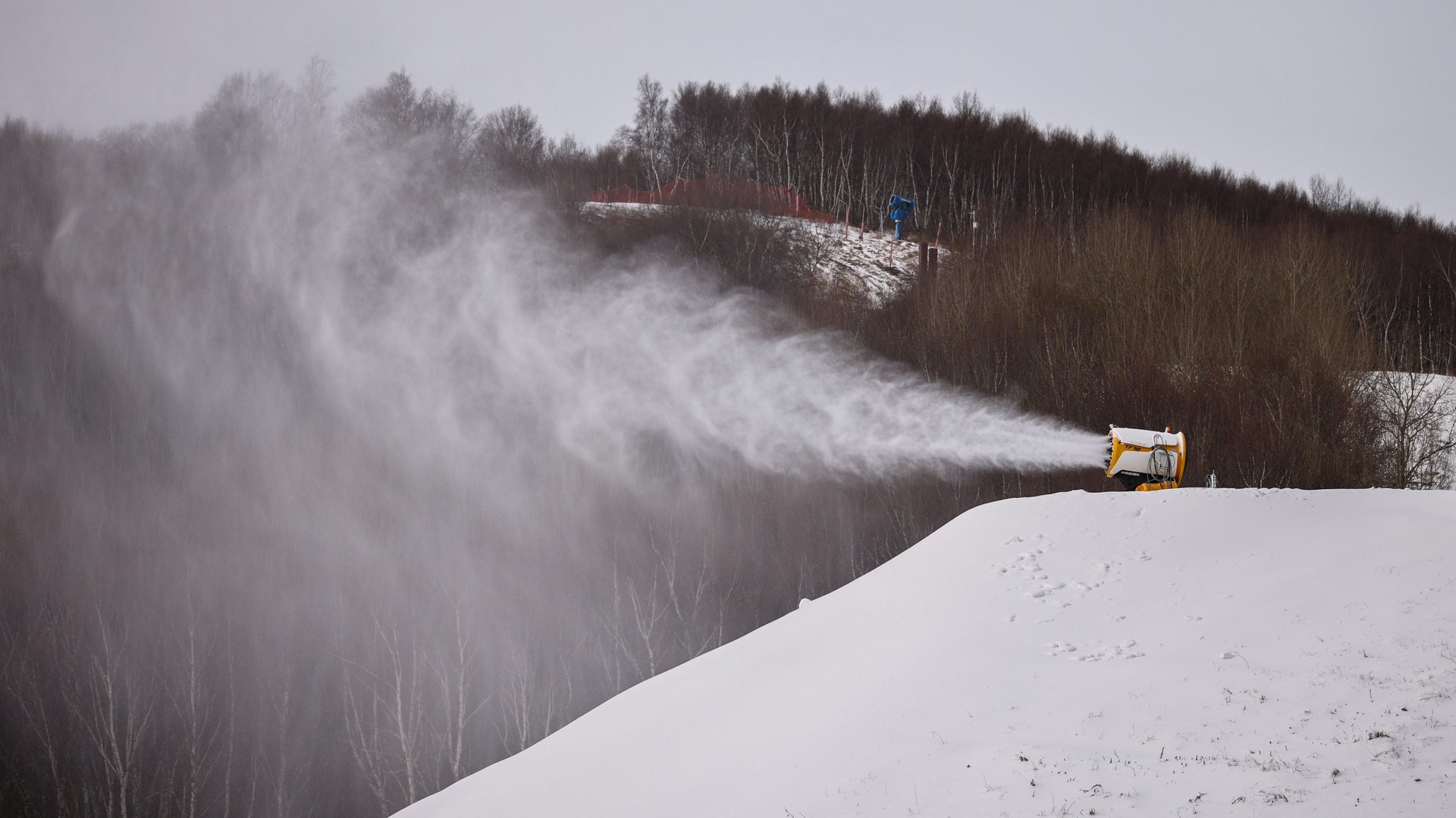A short history of how the Winter Olympics came to rely on fake snow
For seven weeks in the winter of 1964, a hot dry wind blew across the slopes at Innsbruck, Austria, melting the snow ahead of the Winter Olympics. To salvage the games (link in French), Austrian soldiers hauled 20,000 cubic meters (700,000 cubic feet) of ice blocks and 20,000 cubic meters (1.4 million cubic feet) of snow to the site, packing it onto the slopes by hand.


For seven weeks in the winter of 1964, a hot dry wind blew across the slopes at Innsbruck, Austria, melting the snow ahead of the Winter Olympics. To salvage the games (link in French), Austrian soldiers hauled 20,000 cubic meters (700,000 cubic feet) of ice blocks and 20,000 cubic meters (1.4 million cubic feet) of snow to the site, packing it onto the slopes by hand.
But in 1980 at Lake Placid, New York, it was snow machines spraying droplets of water into the air to freeze that conquered the poor skiing conditions delivered by a dry winter. Those Olympics were the first to use artificial snow, which traces its invention to a Hollywood production lot in the 1930s.
What the fake snow lacks in pretty snowflakes—these form from naturally-occurring atmospheric water vapor, while the sprayed water from snow cannons freezes into tiny balls—it made up for in reliability. Some skiers have come to prefer fake snow, which is slower to melt and packs similarly to real snow.
In recent years, uncooperative weather has had snow cannons pumping out ever-larger quantities of fake snow. Vancouver turned 7960 cubic meters (2.1 million gallons, pdf) of water into snow as the host in 2010. Eighty percent of the snow in 2014’s Sochi Olympics was fake, four years later in PyeongChang, South Korea, it was 90%. This year the slopes outside Beijing will be the first Winter Olympics competed on entirely fake snow.
At the Beijing Olympics, fake snow is the only way to go
The climate in Zhangjiakou, 100 miles from Beijing, is cold, but dry. For the last four decades it has averaged a scant 7.9 mm of precipitation each winter. China’s bid for the Winter Olympics had always hinged on an army of snow machines.
China’s bid estimated that they would need 49 million gallons of water to blanket the Olympic slopes in snow. However, a geographer interviewed by Bloomberg, estimated that the country could divert as much as 2 million cubic meters (528 million gallons) of water to snow-making, further straining one of the most water-stressed regions in the country.
The alpine ski center, one of three venues for the games, began making its required 1.2 million cubic meters of snow in mid-November. One cubic meter of snow can require about half a cubic meter of water to make.
The International Olympic Committee’s 2015 report (pdf) evaluating China’s bid for the games said they believed Beijing had “underestimated the amount of water that would be needed for snowmaking for the Games” and “overestimated the ability to recapture water used for snowmaking.”
Snowmaking, climate change and the future
While it had always been the plan to fluff Zhangjiakou with fake powder, holding Winter Olympics on an otherwise snowless landscape might become the template for future games.
According to a study by the University of Waterloo, climate change is driving eight of the 21 sites where previous Winter Olympics have been held out of the running. Shortening snow days and rising average temperatures might mean that within a century, cities like Chamonix, Grenoble, and Palisades Tahoe (called Squaw Valley during the 1960 Winter Olympics, but renamed last year because “squaw” is a derogatory term), are likely to be too warm for snow sports. Even ski resorts in the coldest climates are increasingly relying on artificial snow.
And snowmaking is energy-intensive. Burning fossil fuels to operate the machinery emits CO2, contributing to a warming climate in its effort to cool it. So like air-conditioning and other efforts at adapting the existing world to a changing climate, the snow machines will be worsening the very issue it is trying to help us ignore.